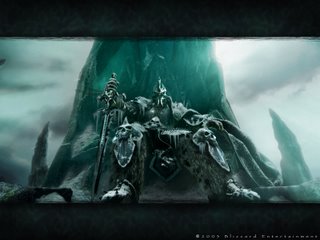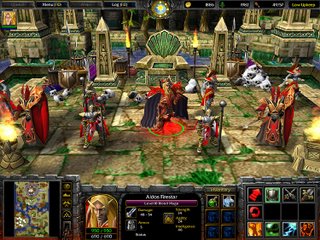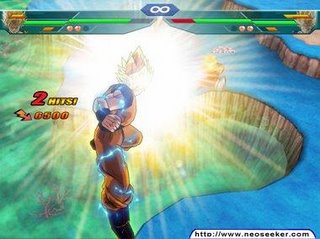
After a seemingly interminable wait, the latest adventure in the long-running Final Fantasy series is at last poised for its English-language release. Arriving in the wake of the well-received Final Fantasy X and the massively multiplayer Final Fantasy XI, Final Fantasy XII blends seamless real-time combat with the traditional cinematic fanfare and gorgeous lands that fans have come to expect from the franchise. Our time with the North American release version of the game let us more fully explore the game's new "gambit"-based battles, its license board upgrade system, its expansive world, and, of course, its new English translation.The game opens with the kingdom of Dalmasca, which is wedged geographically between two large empires, being threatened by the advancing Archadeans to the north. The king of Dalmasca sends his armies to press back against the onslaught, only to have those forces--as well as the lady Ashe's husband, Rasler--killed or driven back. The Dalmascan king is then killed while attempting to sign a capitulation treaty, Ashe seemingly commits suicide soon after, and the kingdom is seized by the intruders. Two years later the uneasy peace in the occupied capital of Rabanastre is broken by resistance activity that rolls up a number of unwitting participants, including war orphan Vaan and the legendary sky pirate Balthier and his serious-minded partner, Fran. While we didn't get too deep into the story, there's enough conspiracy and conniving, ambition and nobility, and betrayal and redemption even early on to promise quite an adventurous ride.
The key part of any adventure is exploring the world around you, and we got to spend a lot of time tinkering around with Final Fantasy XII's battle system. The game's various areas are divided up into generous zones with loading screens between them, but that's the only loading that happens in a given zone, as all battles are fully real-time and integrated into the world around you. You'll move in a group, with a leader character (usually Vaan, though you can swap leaders whenever you wish) taking point and up to two party members behind you, though you'll sometimes get a "guest" character for a fourth slot. As you roam around, you'll be able to see your enemies wandering around the zone, and if you want to fight them, all you have to do is approach them. What your character and your party do then is to a large extent determined by gambits. The gambit system is based on artificial intelligence commands that you set for each character (you can even set your own). Gambits consist of two options: a target and an action. For example, if you set a gambit for Balthier that starts with "Foe: party leader's target" and ends with "attack," then Balthier will attack any enemy that you have the leader attack. Likewise, if you set up bunny-eared Fran with a gambit that starts with "Foe: nearest visible" and ends with "fire," upon attacking enemies, Fran will choose her closest target and cast the fire spell on that target. That's fairly straightforward, but you can also set fancy gambits like "Ally: HP < 20%," "cure," which would cast the cure spell on allies whose health is at less than 20 percent. You can set multiple gambits on each character, and since characters prioritize gambits based on their arrangement (they will always try to do the action on top of the list first if the conditions are right), you can create custom gambits for those who will be primary healers, those who will attack first and then heal after battle, those who will use items, and so on.While gambits seem to make most early fights against monsters pretty brainless, we found that as we progressed into the game and encountered larger groups of stronger monsters who would repeatedly cast bad status effects on us, gambits were often a lifesaver. It's possible to play without gambits. You can turn off all a character's gambits from the battle menu or open up the main menu and turn off individual gambits in your list, but given the real-time nature of the fights and the number of things that are going on, having a good list of smartly arranged gambits looks like the way to go. This is particularly true for the game's bosses; those we encountered were ruthless. Even with gambits set, we still found ourselves micromanaging targets and certain actions where we didn't have a suitable gambit set (you'll find or buy additional gambits as you play), and even changing gambits midfight, so it seems like you won't just be setting gambits and then sitting on your hands most of the time while your characters run around and do all the work.Final Fantasy XII also introduces a brand-new upgrade system called the license board. Accessible from the main menu, the license board looks like a giant checkerboard for each character. Each space on the board, when purchased using license points, will enable characters to learn certain skills or enable them to use certain weapons and armor. If you purchase the "White Magick 1" square for Vaan, he'll be able to learn the spells "cure" and "blindna", which heal allies and blind enemies, respectively. If you purchase the "Swords 1" square, he'll be able to wield the broadsword and longsword weapons. The interesting and sort of counterintuitive thing about the license board is that it grants you the ability to learn skills, but not the skills themselves. If you want Vaan to cast cure, you still have to purchase the cure spell from a shop before he can cast it. Likewise, if you bought a longsword at the weapon store and want him to use it, he can't equip it until you've also purchased the proper license. We ended up hoarding both money and license points to ensure we'd be ready to pick up the skills and items we wanted.

Final Fantasy XII breaks from the role-playing norm with its battle system and upgrade mechanics. The series has always fought to make each entry distinct, and at least in that, Square Enix has succeeded here. However, there are still all the trappings that you would expect from a Final Fantasy game: an involved narrative, a beautiful world, summon monsters, and even chocobos and moogles. The 12th installment in the not-so-final fantasy promises to be an interesting one, and we'll bring you the full story in our review closer to the game's release.



